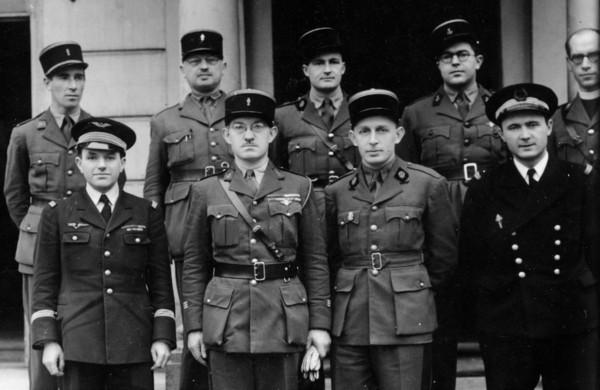
Tartakower- The Dance of the Pieces
There is great joy in sharing things that are beautiful or unique; sometimes both!
The book "The Hypermodern Game of Chess", by GM Savielly Tartakower, is a jewel. He covers many different opening systems, and gives lucid explanations (and many concrete variations!) to all of them.
The games he presents are offered with extraordinary comments which can only help patzers like me understand the game of chess a little more.
Chess is a game I admire much and understand little. This should not come as a surprise to anyone; when Kramnik was no. 2 in the world, he stated that he did not fully understand chess. Yet one can love something without fully understanding it, and that is where I find myself- admiring the concepts (and executions on the board) of the great players, yet finding myself unable to play like them. And I am sure I am not alone.....
Now, the following essay by Tartakower reminded me of Vishy Anand saying that when he played chess, the pieces became alive to him.....Ninzowitsch also used to talk about the pieces as live beings, with feelings and aspirations......
So I want to share this with you all, as a miniature sample of the creative bent of Tartakower, one of the great Teachers of the game!

On page 205 of this book, Tartakower suddenly goes into a deep philosophical essay about the nature of chess thought:
"When laying their doctrinal systems, chess didacticians are wont to bandy about concepts such as: Time, Space, Power, Will, Logic, Luck, Crisis, Plan, Force and the like, while failing to recognize an all-reconciling, grand-unifying influence which overarches all of these elements: the revelatory power of chess thinking.
This power- the sole guarantee of victory and whose most brilliant champion is Dr. Emanuel Lasker- involves the accurate:
1) judgment of the position;
2) evaluation of the opposing partie's chances;
3) anticipation of potential complications; and
4) development of a guiding conception, etc., etc.
In addition to talent, knowledge and drive, a large if not crucial role in the revelation of these mysterious chess interrelations is undeniably played by empathy with the immanent significance of the pieces: Just as the virtuoso possesses the power to bring his instrument to life, in order to draw from it a steady flow of fresh inspiration, so must the chess-player, as a true artist, not view his battle material as inanimate objects!
"The pieces have feelings, thoughts and complaints", asserts one chess writer. One may also not disregard that in the chess battle and the laws of statics get overthrown; that every piece gets thrown into a feverish operative state.
It might also be said that this line of thinking accounts for the fact that advances in the anatomy of the middlegame be invariably achieved by subjecting each piece to a thorough re-examination of most pragmatic function; a process which commonly yields fresh perspectives. This latter point demonstrated by the fianchettoing of the bishops, for instance, which has become so popular of late.
As a whole, chess is so to speak a crossword puzzle in disguise! Let us now try to "unpuzzle" by empirical means, whereby the following treks characteristic of each piece shall be conveyed by diagrams:
This Knight pattern is from the game Alekhine-Tartakower, London 1922
This next Knight pattern is from the game Alekhine-Tartakower, The Hague 1921
The next Knight pattern is from the game Gruenfeld-Steiner, Merano 1924 (sacrifice of f7!)
Reti-Bogoljubow, New York 1924
Lasker-Tarrasch, Match, 1916
Reti-Capablanca, New York 1924
Tartakower-Reti, Vienna 1920
Reti-Marshall, New York 1924
Bogoljubow-Rubinstein, Stockholm 1920
Maroczy-Bogoljubow, London 1922
Tarrasch-Lasker, Munich 1908
Reti-Lasker, New York 1924
Maroczy-Euwe, Scheveningen 1923
Tarrasch-Alekhine, Bad Pistyan 1922
Euwe-Rubinstein, The Hague 1921
Spielmann-Tartakower, Copenhagen, 1923
Alekhine-Yates, London 1922
Tarrasch-Reti, Vienna 1922
The crowning point of this "essay" by Tartakower is the following diagram, based on the game Maroczy-Euwe, Scheveningen 1923:

Tartakower was a most remarkable man- born in 1887, he joined the French Resistance in 1940, at the age of 53. His new name was Lt. Cartier. He was parachuted various times behind enemy lines, in dangerous missions. A man of great character and courage!


http://www.francaislibres.net/liste/fiche.php?index=97851
--------------------------------------------------------------------------------------
From his Wikipedia page:
Tartakower is regarded as one of the most notable chess personalities of his time. Harry Golombek translated Tartakower's book of his best games, and in the foreword wrote:
A talented chess player, Tartakower is also known for his countless aphorisms, sometimes called Tartakoverisms. One variation of the Dutch Defence is named after him. The Tartakower Defence in the Queen's Gambit Declined (also known as the Tartakower–Makogonov–Bondarevsky System) also bears his name, as does the most common variation of the Torre Attack. He is alleged to be the inventor of the Orangutan Opening, 1.b4, so named after Tartakower had admired a great ape during his visit to the zoo whilst playing in the great 1924 tournament in New York. Tartakower originated the Catalan Opening at Barcelona 1929. This system starts with 1.d4 d5 2.c4 Nf6 3.g3. It remains very popular today at all levels.
José Raúl Capablanca scored +5−0=7 against Tartakower, but they had many hard fights. After their fighting draw in London 1922 (where Tartakower played his new defense), Capablanca said, "You are lacking in solidity", and Tartakower replied in his usual banter, "That is my saving grace." But in Capablanca's reports of the 1939 Chess Olympiad in Buenos Aires for the Argentine newspaper Crítica, he wrote:
Sugden and Damsky stated that like other chess players of all ages and ranks among whom there is generally no lack of idiosyncrasy or superstition, Tartakower, a trenchant wit, took a most unsightly old hat with him from tournament to tournament.